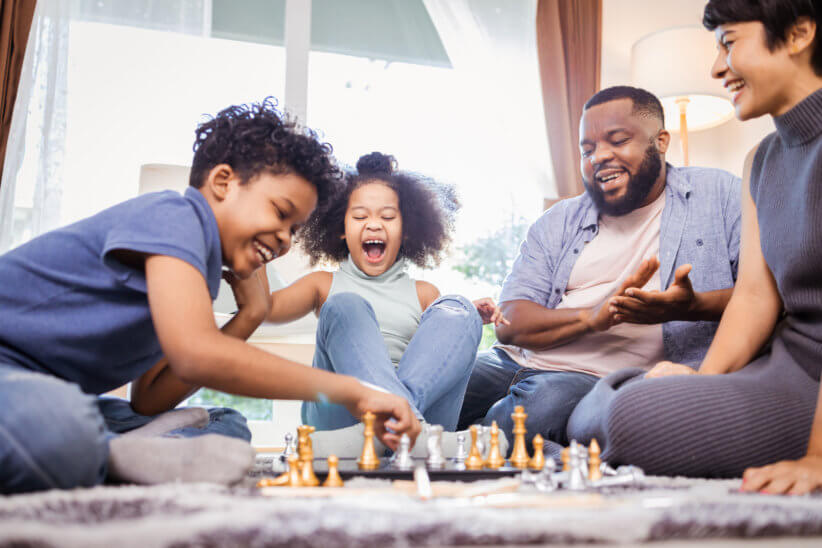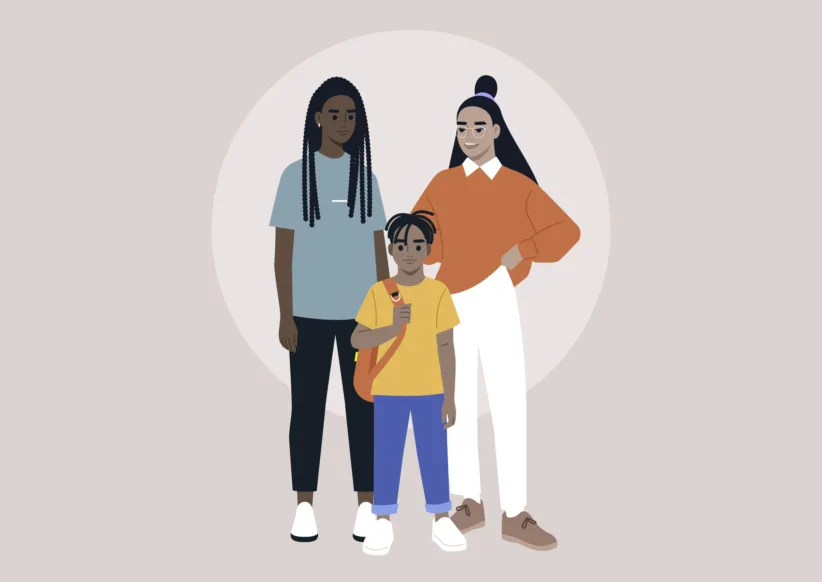Looking into a newborn’s eyes, there is something ancient, yet completely innocent in his gaze. A hint of the divine lurks within the depths of those limpid pools. While utterly dependent upon us for their survival, they appear to have forgotten more than we will ever know. Like the energy stored in an object at rest, they are a body full of potential. Within that miniature body, cradled in our arms, exists the potential for everything he will ever become.
Whether or not that potential is fully realized is primarily in our hands.
Like all of nature, our children are exquisite works of art and science. As members of the human race, their legacy is to become both scientists and artists. They are born to wonder, to want to understand and explain — science. They are born to create, to want to express and communicate their experience — art.
From the beginning, infants use all of their senses to figure out what things are and how they work. When they do begin to talk, they start naming things. Their earliest attempts at conversation are filled with questions — what, how, and why. They replicate sounds and hum. Their bodies move rhythmically. Give a child a pencil, and he will draw. Provide music, and he will sing and dance. Listen, and he will tell you a story. That every human culture has art and science is not surprising. What is surprising is how rapidly the artist and scientist is socialized out of our children.
We take our young budding artist and scientist and say, “I can’t look at that right now. I’m too busy.” “I’m doing something. Be quiet.” “Sit still.” “Don’t touch that.” “Don’t make a mess.” “Stop asking so many questions.” We put a screen in front of them to keep them occupied, so we can get back to our important work.
By the time children start school, science has become a dreaded subject that seems unrelated to their existence. Art has become something they cannot do, are not good at, or are not supposed to like because of their gender. They have learned to doubt or mistrust the artist and scientist within. Then we entice them with contests and trophies to get them enthusiastic about things for which they had a natural affinity.
How ironic that our children, as living experiments moving around in a veritable natural laboratory with science constantly going on inside and around them, are convinced science is something that is only relevant to people called scientists. How unfortunate that they become inhibited by the social definitions of art and the evaluative process, considering themselves unqualified to create a masterpiece on their life’s canvas, assuming someone called an artist can do it better.
In our efforts to arbitrarily assign monetary value, we have treated art and science as mutually exclusive rather than inextricably connected. There is the anatomy, chemistry, and physics of visual art. The physics of musical sound. The anatomy of singing. The psychology of literature and theatre.
There is no inherent value of one over the other. Each is enhanced by an understanding of and appreciation for the other. Together they make us the unique creatures we are. Together they allow us, unlike any other creature on Earth, to understand, create, and assign meaning to our existence.
There is a science that is essential and prerequisite to the practice of any other science or art — conscience. Just as biology is the knowledge of living things, conscience is the knowledge of the difference between right and wrong. The dictionary defines conscience as knowledge of one’s guilt. I prefer to think of conscience as recognizing the implications of one’s choices. Conscience should not just kick in after a poor choice has been made. A healthy conscience is proactive and serves as a guide when faced with challenging decisions.
Like all sciences, conscience is learned. It is learned by our children at our knees and elbows, in the back seats of our vehicles, and in our homes. It is learned by observing as well as listening because “while they may not listen to everything we say, they are watching everything we do.” They are taking note of whether the actions match the words. Conscience reminds us that just because we can do something, doesn’t mean we should.
As parents, we are responsible for making sure our children develop a healthy conscience, and setting a good example is the best teacher. When our children witness us using our perceptive skills and demonstrating empathy toward others in our decision-making and actions, they learn how to exercise conscience. When we express appreciation for their conscientious choices and institute related, reasonable consequences for their failures to do so, we help strengthen their conscience.
Jiminy Cricket told Pinocchio, “Conscience is that still small voice that people won’t listen to.” We must make sure our children not only hear and recognize that still small voice, but that they listen to it. Practicing conscience in art and science, in life, significantly increases the likelihood that our children will make worthwhile contributions to the world as they seek to fulfill their potential.
Carolyn Waterbury-Tieman is a resident of Lexington, Ky. She has been married for 29 years and has two sons. She spent 15 years in various agencies and clinics as a family therapist and parent educator and has written extensively on the topic of parenting. To contact her, please e-mail paren





















